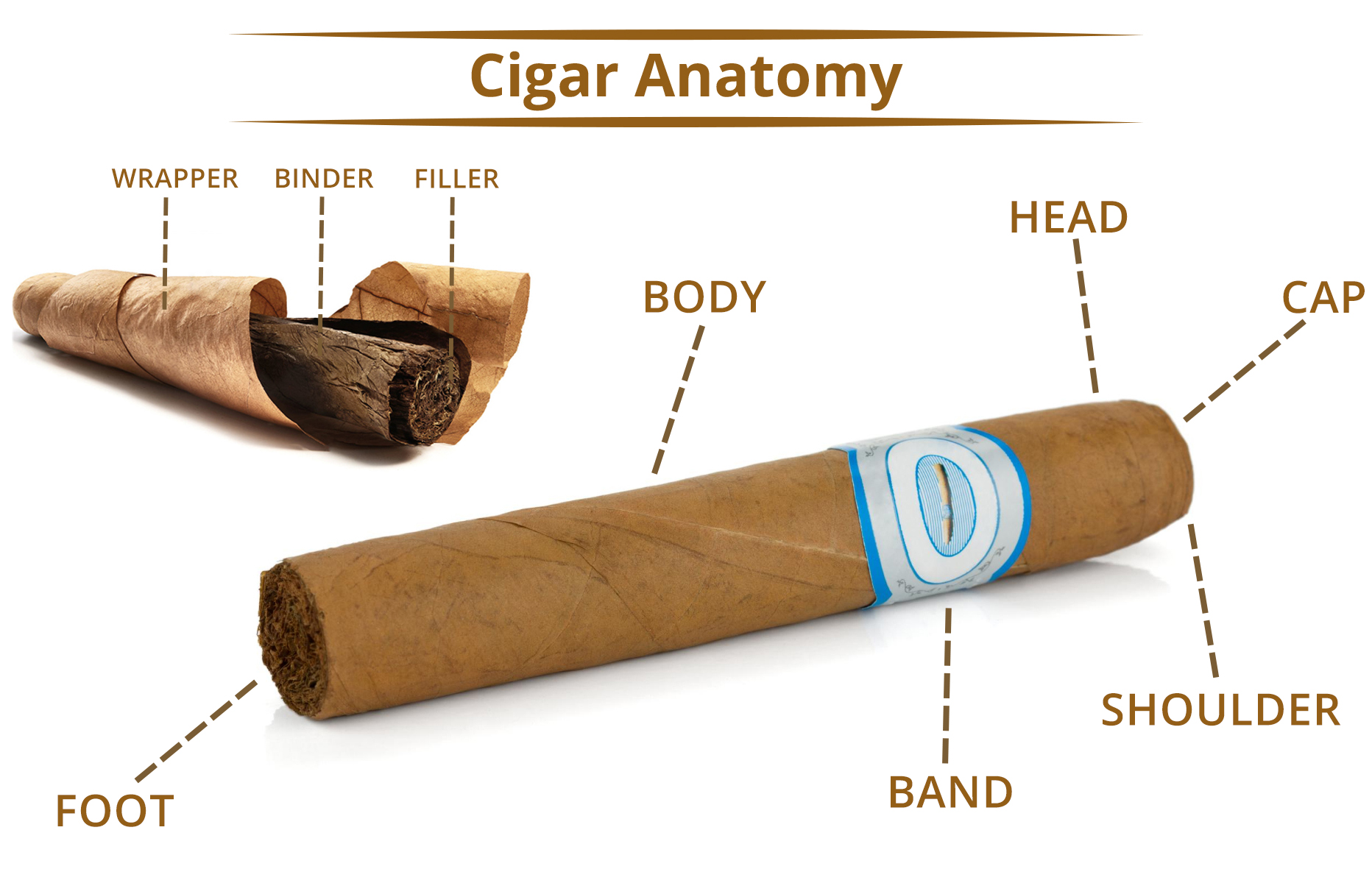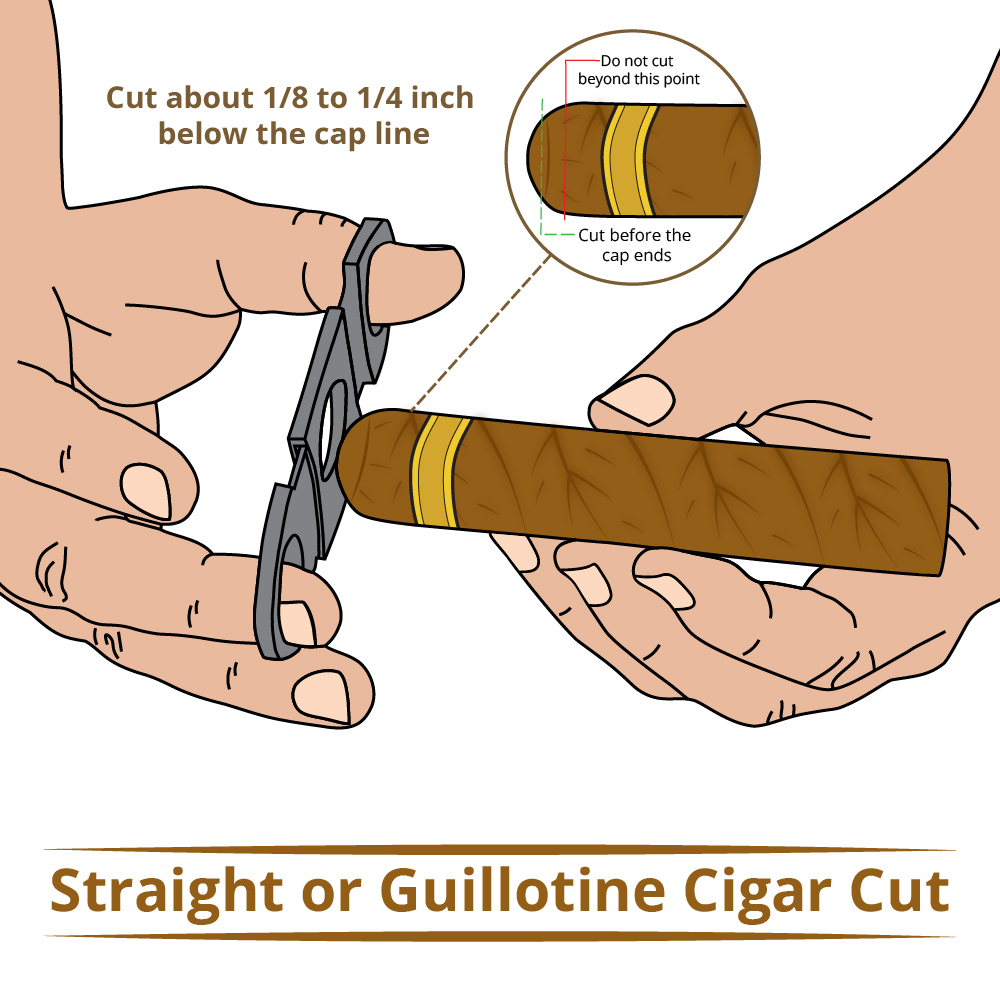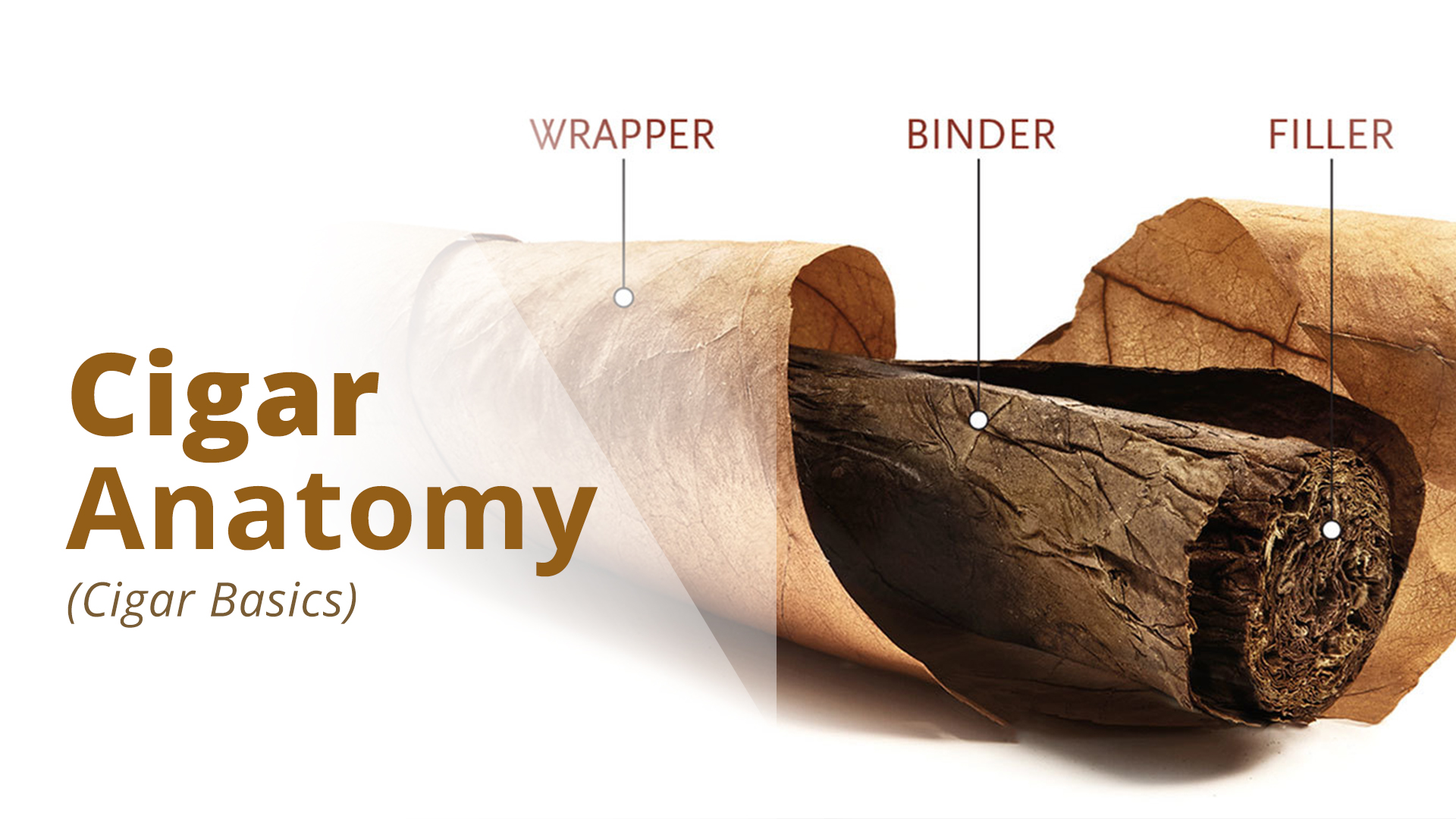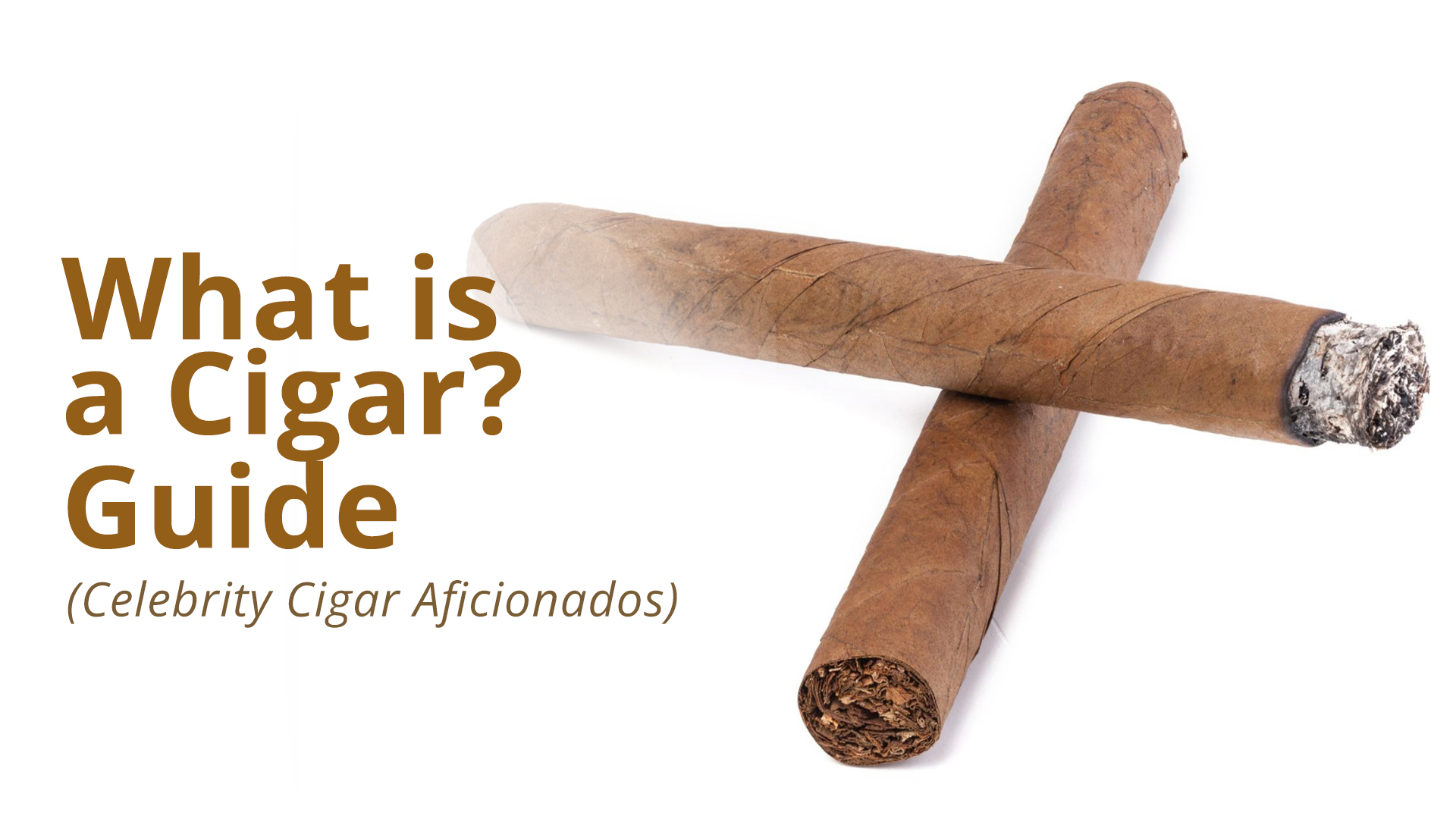The craftsmanship behind a cigar and its anatomy is the precise ratio of different tobaccos.
It’s the blend that sets a cigar apart from the rest, much like a recipe that requires a keen sense of experimentation and mastery.
The blenders who take up the challenge to create unique blends make every cigar a singular experience.
And each blend is carefully crafted in various shapes and sizes, with the ratio of filler, binder, and wrapper tobaccos adjusted accordingly.

So, what exactly goes into each part of a cigar? Let’s take a closer look at the anatomy of a cigar and discover its key components.
The Wrapper
The outermost layer of a premium handmade cigar, and the one that gives it its unique appearance.
The wrapper is like a suit for a cigar, and its color and texture can tell you a lot about what’s inside.
It’s the most expensive part of a cigar and requires the most attention to detail during the rolling process.
A good wrapper should be supple, oily, and have consistent color and texture.
The oils in the wrapper impart a subtle sweetness to the smoke, and the wrapper’s texture can affect how the cigar burns and draws.
The color of the wrapper can also affect the taste of the cigar.
A darker wrapper or so-called Maduro can indicate richer, more full-bodied smoke.
While a lighter wrapper classified as Naturals can be milder and more delicate.
Here are two examples to make a difference:
Natural: Romeo y Julieta 1875 – This cigar features an Indonesian natural wrapper that delivers a smooth, creamy flavor with hints of wood and nuttiness.
Maduro: My Father Le Bijou 1922 – This cigar features a dark and oily Nicaraguan Maduro wrapper that delivers a bold, full-bodied smoking experience with leather and black pepper notes.
Other types of wrappers can be classified by their country of origin and the seed varietal used.
For example, an Ecuador Connecticut wrapper is made with Connecticut-seed tobacco that’s grown in, you guessed it, Ecuador.
It’s these subtle differences that make cigars so complex and fascinating.
The best wrappers are grown in hot, humid climates, where tobacco plants can thrive.
The Binder
One of the unsung heroes of a premium handmade cigar.
It may not have the wrapper leaf’s flashy appearance or the filler’s complex flavors. Still, without it, a cigar wouldn’t hold together.
It’s the second cigar component responsible for keeping the filler together. The glue that holds the cigar’s flavor and aroma together.
But it’s not just any leaf – it has to be chosen carefully for its strength, elasticity, and burn rate.
Torcedors experiment with different binder tobaccos to find the perfect match for their filler and wrapper.
The binder has to be strong enough to hold the filler together.
But not too thick or too thin, as this will affect the cigar’s draw. It also has to burn evenly, as an uneven burn can ruin the experience of smoking a cigar.
Sometimes, some premium cigars use one or two binder leaves to craft the cigar.
One example of a cigar model crafted with two binder leaves is the La Flor Dominicana Double Ligero.
This cigar combines Dominican filler tobaccos and a decadent Ecuadorian Sumatra wrapper.
Still, the double binder of Dominican leaves sets it apart. The additional binder leaf provides a unique complexity and strength to the cigar’s flavor profile.
Like the wrapper, the binder also contributes to the cigar’s overall flavor.
Depending on the type of tobacco used, it can add notes of spice, sweetness, or earthiness to the smoke.
The Filler
The filler is the heart and soul of a cigar, hidden deep within the binder and wrapper. It’s the essential component that can elevate a cigar from ordinary to extraordinary.
A cigar’s filler comprises a carefully balanced tobacco blend from different fields, crop years, and regions.
And it’s these distinct transitions of taste that can make a cigar’s flavor profile genuinely remarkable.
The density of the filler tobacco plays a crucial role in determining how the cigar burns and draws.
For example, a cooler, looser draw may come from a cigar with a lighter filler. While a slower-burning, firmer pull may come from a denser filler.
Some cheaper cigar versions may be made with what’s known as “Cuban sandwich” filler.
This refers to a blend of shorter tobacco leaves used to fill the cigar, including scraps and trimmings.
While this method can save on production costs, it may offer different flavors and quality than premium long-filler cigars made with whole tobacco leaves.
When you smoke a cigar, you’re experiencing the culmination of a cigar maker’s talent and passion for blending the perfect combination of tobaccos.
And the filler is the key to creating a cigar that offers a truly unforgettable smoking experience.
The Foot
The place where the magic begins is the foot of the cigar. Have you ever wondered what makes a cigar start burning? Well, my friend, that’s all thanks to the foot.
The foot is the end of the cigar you light up, and it’s also where you’ll find the filler tobaccos.
When you light the foot, the heat from your lighter or match will ignite the tobacco and create the smoke you’ll enjoy.
But the foot is more than just a means to an end. It’s actually an essential part of the cigar’s construction.
How the tobacco is packed in the foot can give important information about the quality of the stogie.
Did you know that the foot is where you should take a whiff of the cigar’s aroma before lighting it?
By smelling the foot, you can sense the flavors that will come through when you smoke it. It’s like a sneak preview of the taste to come.
The Cap
At the head of every cigar, there’s a piece of art known as the cap. This is where you’ll take your first draw and set the stage for the entire experience.
The cap is a small but crucial piece of the cigar’s construction, made of the same tobacco leaf as the wrapper.
You can easily recognize the cap by the subtle line around the head of the cigar where the end starts to taper, also known as the shoulder.
Depending on the shape of the cigar, the taper can be more gradual or more drastic.
Highly skilled rollers can apply the cap with near-perfect symmetry, showcasing their expertise and artistry.
Before puffing, you must make a clean cut above the cap’s seam. This allows you to draw the smoke evenly and keeps the wrapper intact as you smoke.
Cutting below the shoulder could cause the wrapper to unravel, which can ruin your smoking experience.
A standard guillotine or straight cutter is commonly used to cut the cigar’s cap.

For a typical Robusto or Toro, cutting roughly the circumference of a dime from the cap is recommended.
And remember, always cut above the seam that outlines the cap to ensure a smooth and enjoyable smoke.
The Band
A small, yet mighty piece of paper wrapped around our beloved smokes. Do you know the history behind these colorful bands?
They actually started in the 1800s as a way to identify Cuban cigars imported to Europe.
Back then, these bands were a mark of quality and origin, and today they still symbolize brand identity and tradition.
Think about it – have you ever been drawn to a certain cigar based solely on its band?
It could be the intricate calligraphy or the vibrant landscape depicted on the paper.
The truth is cigar bands can significantly influence our purchasing decisions and enhance our overall experience with a cigar.
Some bands are so iconic that they become synonymous with a particular brand.
Take the San Cristobal Ovation, for example, with its distinctive black and gold design. Or the La Aroma de Cuba Noblesse, with its regal crest and bold font.
And who could forget the elegant simplicity of the Ashton Symmetry band?
For some enthusiasts, collecting and displaying cigar bands is a hobby in itself.
It’s a fun and easy way to keep track of the cigars you’ve tried and the ones you want to revisit.
Snapping a quick pic on your smartphone is a convenient way to document your cigar journey.
Cigar band collecting is a popular hobby among aficionados, serving as a memento of the exquisite flavor experienced or a way to show off to friends.
Just kidding. Never do that. It’s not proper etiquette, and you will look like a bum.




